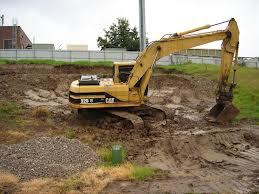Excavation is one of the most important and yet understated aspects of modern engineering, and one that has also accounted for some of the most prominent archaeological finds of recent history. It can also be occasionally controversial, as the recent changes to Turkey’s Forestry Law and the subsequent fall out has showcased.
Beyond this, however, it is also important to note that excavation has a significant impact on the geographical landscape and surrounding environment. This is particularly true when it comes to creek excavation, which may be required when local authorities consent to the construction of a bridge or new water flow control measures.
The Environmental Impact of Creek Excavation: 3 Things to Consider
With changes to Forestry Law now impacting on developed nations throughout the world, it is worth considering the environmental impact of creek excavation and its relevance in the modern age. Consider the following: –
1. The Removal of Material from the Streambed
On a fundamental level, one of the key aspects of creek excavation is the removal of material and debris from the streambed. This essentially creates craters and deepens the streambed, which in turn allows the water to flow more rapidly downstream. As this natural process occurs, one of the first things that happens is that the speed of water flow begins to change, while additional material that was secured in place by the streambed becomes dislodged and quickly erodes. The distribution of this debris ultimately causes significant changes to water depth, velocity and bank integrity, which in turn has a direct and often negative impact on local species habitats.
2. Dry Periods and the Threat Posed by Storm Waters
One of the most common purposes behind creek excavation is the need to create a wider space that can handle increased water capacity. While this requires water to be drained from the nearby floodplains, a lack of natural water absorption can cause the creek to dry up quicker and intermittently during drier seasons and the months of summer. Another consequence of this is that when storm waters are washed into the creek from surrounding rivers, the water level and subsequent velocity become dramatically increased. Sadly, this can cause riverbanks to gradually erode, and this can lead to ecological damage while also increasing the risk of future flooding.
3. Channelling the Creek and Shortening its Length
Local authorities may also be required to excavate a creek with a view to creating a shorter and more direct route, which in turn eliminates bends and theoretically aids water flow. This is commonly referred to as channelling, and the process of shortening the creek length also caused the bed gradient to deepen significantly. Such an action is also known to alter the creek’s water velocity, while in extreme cases it can also trigger sudden bank erosion and even cause them to collapse. The final consequence of this could well be flooding to downstream land, which must be avoided at all costs this happens to be a residential area.
While the environmental consequences of creek excavation are largely unavoidable, they can be managed and minimised for the good of the natural world. This is something that leading excavation firms such as Groundforce UK have worked tirelessly on, as they look to manage international excavation projects and pursue change without damaging the natural environment around us.



